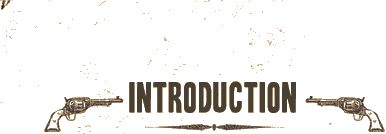
"Startling Cases and Daring Confessions"
An Introduction to the Pulps
Fifteen cents. That was the price of admission to a garish world of purple prose and smoking guns. Of square-jawed cowboys, relentless Mounties and world-weary police detectives. Of time travel, eldritch horrors and far-flung planets. Of bawdy cartoons, tragic love, romantic lumberjacks and women both virtuous and vengeful.
It was the world of the pulp magazines.
The pulps, as they were known, were mass-market magazines characterized by often-lurid stories that covered the full range of fashionable genres: westerns, detective and true crime, sports, romance, adventure, science fiction and horror. Whatever your interest, there was a pulp magazine for you. Their covers were vivid, often to the point of being gaudy, but they served their purpose: to attract the attention of people passing the newsstand, to get them to buy and to get them to read. Once you had read an issue, chances are you would be back for the next, and the next.
In the first half of the 20th century, the pulps were a phenomenally popular form of entertainment, even if they weren't an entirely new phenomenon. According to Don Hutchison, author of The Great Pulp Heroes, what we now call "pulp" magazines were produced as early as the 1840s, when publishers decided that one way to lower costs, and thus price, was to use newspaper presses and cheap newsprint paper. A sheet of newsprint, doubled to make four pages, produced a reasonable book-like publication format (Hutchison 1995, p. 5). These proto-pulps ran novels in serial form, but were replaced by paperbound editions of complete novels that sold for a dime (Hutchison 1995, p. 6) -- hence the term "dime novel." By the turn of the century, sales of dime novels had decreased and the pulps, with their screaming story titles and attention-grabbing cover art, began to capture the public interest.
The pulps were designed to be inexpensive to buy, even less expensive to produce and ultimately disposable. As Alison M. Scott (1998, online), head librarian at the Popular Culture Library of Bowling Green State University in Ohio explains, "interior pages were printed on extremely cheap, rough-surfaced paper manufactured from wood ground into a pulp, chemically treated, and formed into sheets. The lignin 1 inherent in the wood, combined with chemical treatments, left wood-pulp paper with a high acid content." It was from this low-grade paper that the pulps took their name. Because of the paper's high acid content, pulp magazines tend to discolour and become very brittle over time, and as a result very few have survived the decades in good condition.
The covers of the magazines fared a little better. Scott (1998, online) continues: "pulp-magazines [sic] covers were printed on lightweight but good-quality paper stock, coated with china clay to create a smooth printing surface that resists abrasion and takes ink well. The clay used to produce the 'slick' surface of the paper has the incidental benefit of increasing the alkaline content of the paper and thus slightly resisting the deterioration caused by the acidic decay of wood-pulp paper." Over 60 years later, the covers of many pulps remain intense, with bold splashes of attention-grabbing colour, faces agog with fear, dilated with lust and contorted by murderous intent. Guns and knives appear frequently, usually being fired in the case of the former, or held to someone's throat in the case of the latter.
The combination of those covers and the wondrous stories inside was irresistible to entertainment-hungry audiences, and as Hutchison (1995, p. 4) puts it, "[b]y the 1920s and 1930s the mass-market pulps were into a Golden Age of creativity, with new and exciting writers commanding armies of devoted fans."
Of course, those writers were by and large American, as were all the publishers. Canadians were represented only in the "armies of devoted fans" as a relentless tide of pulp magazines of every genre washed across the 49th parallel.
Then, in 1940 with the War Exchange Conservation Act, everything changed.
Note
1. Lignin is a naturally occurring component of plants that helps provide strength. Its presence in paper contributes to chemical degradation of the paper, so it is generally removed during manufacturing.
References
Hutchison, Don. The Great Pulp Heroes. Oakville: Mosaic Press, 1995.
Scott, Alison M. "The Paper They're Printed On." SOL Rising. Number 21 (1998). Friends of the Merril Collection.
www.friendsofmerril.org/sol21.html (accessed January 6, 2005).